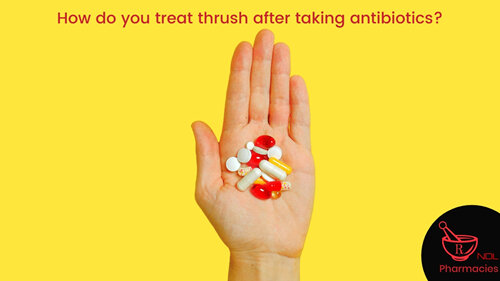St Heliers Pharmacy
St Heliers Pharmacy is your local, community pharmacy located in the heart of Royal Oak. You can order products online for urgent delivery or visit us in store. Our friendly team of qualified pharmacists are happy to help.

Vaginal thrush is an infection caused by an overgrowth of the yeast called Candida albicans. The yeasts are naturally occurring in the body but only in small amounts. Thrush can be really itchy, often causing irritation and vaginal discharge.
How can women get vaginal thrush from antibiotics?
Normally, there is a balanced mix of bacteria and yeast in the vagina. The former should dominate the latter in number.
Unfortunately, yeast infection on the mouth and vagina is common for women who recently took broad-spectrum antibiotics. This happens because the drugs kill both bad and healthy bacteria.
As a result, the number of healthy bacteria in the vagina decreases. Then, yeasts like Candida albicans grow uncontrollably and causes infection.
What are other causes of a vaginal yeast infection?
High alcohol intake
Weak immune system
Use of oral contraceptives
Uncontrolled diabetes
Vaginal acidity
Pregnancy
Symptoms of vaginal thrush include the following:
Redness and swelling
Itching
Painful intercourse
Creamy white lesions in the vagina
White discharge that is thick and cottage-cheese like in appearance
Burning sensation while urinating
It is easy to mistake the symptoms of vaginal thrush as that of bacterial vaginosis. Others may think of it as signs of STI. However, these are completely different medical conditions.
Thrush can affect women's health if not treated properly. This is why it is important to get a diagnosis by a doctor.
There are several treatment options for yeast infection. Mild cases last for a few days. In addition, conditions may improve even without treatment. On the other hand, moderate and severe infections can last up to two weeks and require treatment.
OTC medication. Mild infections can be treated by antifungal creams that need to be directly applied to the vagina. In addition, you may use vaginal pessaries containing clotrimazole as an active ingredient.
Prescription medication. The doctor may prescribe strong antifungal agents for more serious cases of thrush. Common prescriptions include fluconazole, nystatin, and itraconazole.
Probiotics. Lactobacillus, the most common probiotic, naturally live in the vagina. In fact, it helps prevent the overgrowth of yeasts. Combining probiotics with medicines may make the treatment more effective.
You can take the following steps to prevent the onset or recurrence of vaginal yeast infection.
Avoid tight-fitting clothes. Instead, wear loose clothing and breathable underwear.
Practice proper hygiene. Always keep the vagina clean.
Avoid scented feminine wash, pads, and tampons.
Do not take long, hot baths. This is because yeasts prefer a warm and moist environment.
Make sure to stay dry. Change your clothes right after swimming.
Only use antibiotics when prescribed by your doctor.
If you have diabetes, manage your blood sugar level.
Do not use contraceptives with high levels of estrogen.
Reminders
Do not self medicate if you have never been diagnosed with vaginal thrush before. Women who previously had yeast infection could use the same treatment plan recommended by the doctor. However, it is always best to avoid self-medication.
OTC antifungal products and prescription medicines are available at your local StHeliers Pharmacy in Auckland. You can purchase products online and have them delivered right at your home.